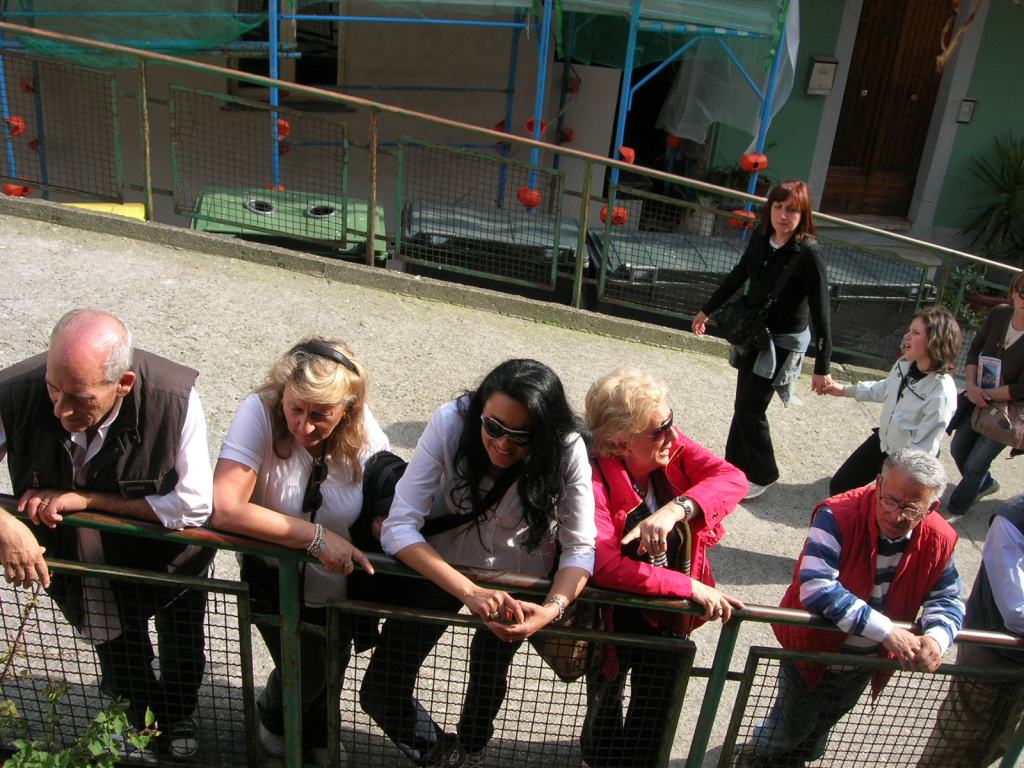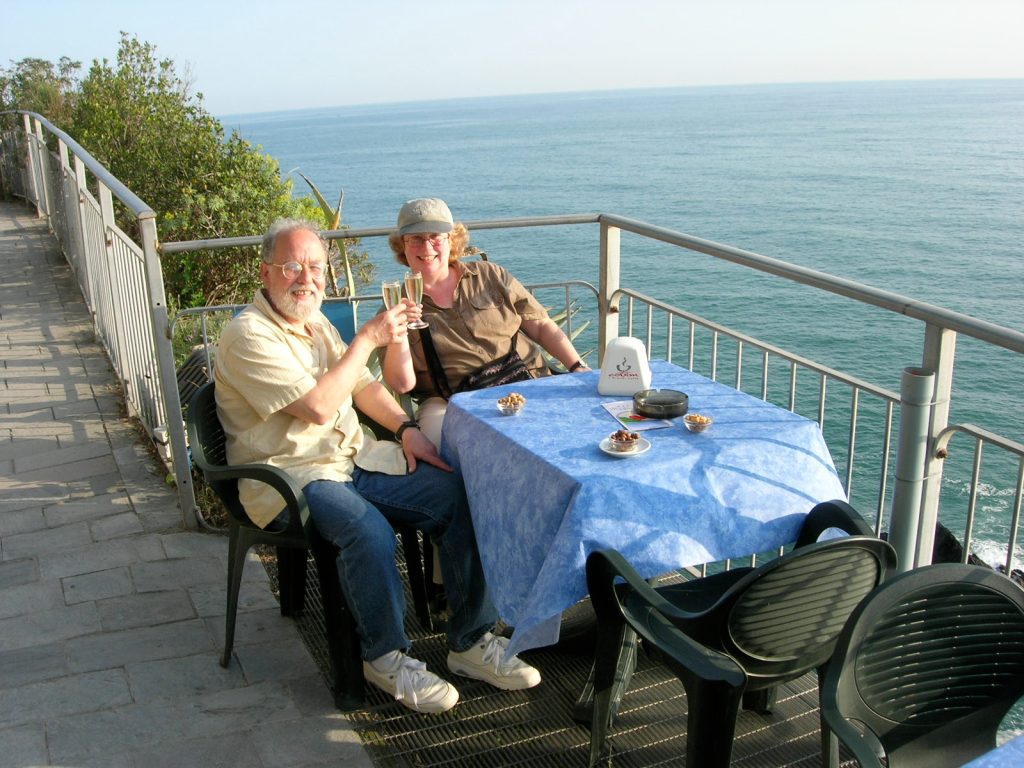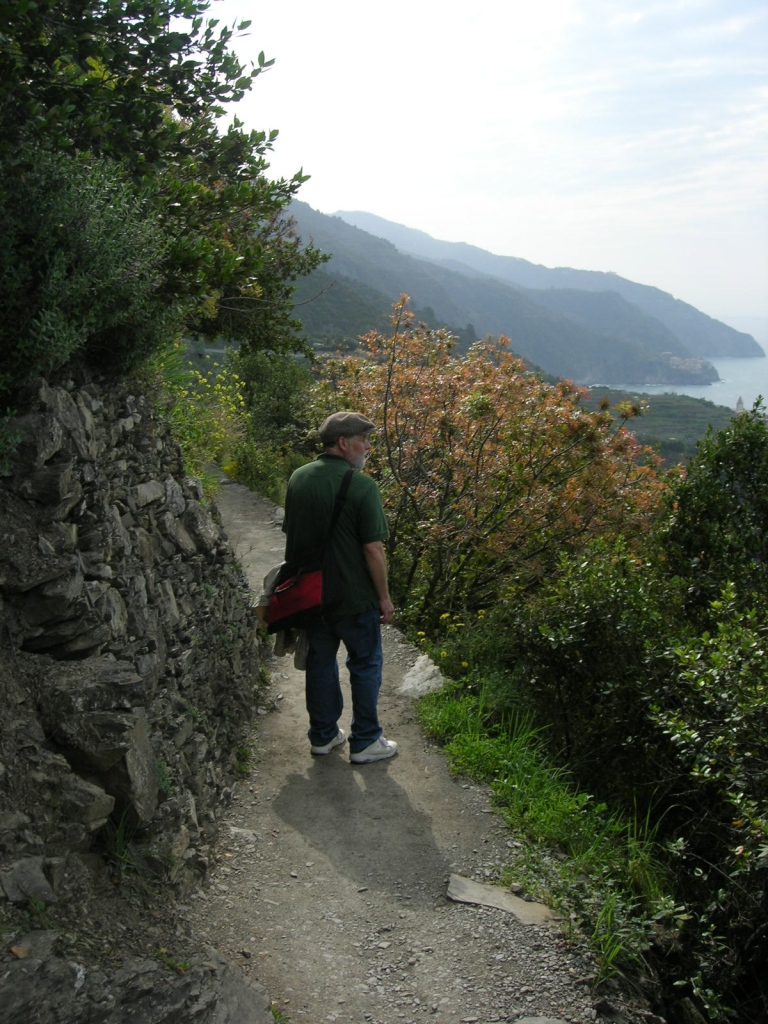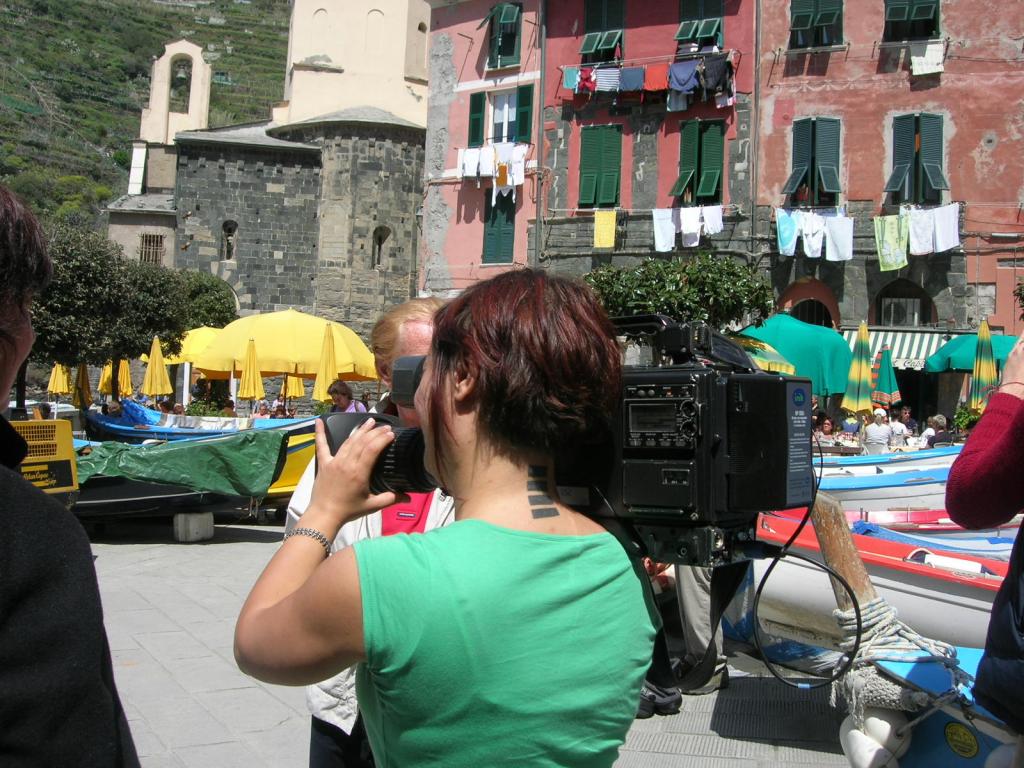
We are nearing the end of this serializing of my six-chapter travel memoir about a trip to Italy’s Cinque Terre in 2008*. In 2010, I self-published Write Your Travel Memoirs: 5 Steps to Transform Your Travel Experiences Into Compelling Essays. It included five how-to chapters and, to provide an example, this memoir. The book is available on Amazon.com.
It’s time to send your submissions to True Stories Well Told! Let’s fill that queue for after the series ends. See submission guidelines here.
Chapter 6. Return “Inserimento”

We left the Cinque Terre on the Monday following the Liberation holiday weekend. It was time to make our way home. We returned by train to a suburb outside Genoa, found a pleasant hotel, and set out to explore. We’d chosen this place, Nervi, to check out one more botanical garden mentioned in our guidebooks. This one was as easy to locate as the Torre Guardiola was hard to find, as flat as that one was steep. We finally found the curving paths, the benches, the carefully signed plant communities of our expectations.
Storm clouds hovered overhead—we had left the sun in Cinque Terre where we had found it. But somehow that gray made the garden’s colors more intense, the pink and yellow roses against green foliage as luminous as a dream, the brick lungomare (seafront walk) poignantly moody, caught between a roiling gray sea and boiling gray sky.
After dinner in a vintage Fascist-Modern seafront restaurant we walked back to our hotel in rain. The next day rain continued; even so, Nervi left us with a sweet impression. The smell of her orange trees—both blossoming and covered with fruit, what kind of miracle is that?—was a final gift from Italy.


After the following day’s final Genoa walkabout, we spent a night at an airport hotel that already felt like America, and early the next morning boarded the plane for home. Many incidental discomforts later, we were back in Chicago, then back on the bus to Madison, and finally, about 7pm, back at the bus stop we had left ten days earlier. Replacing our departure’s excitement was grim exhaustion.
“Do you recall who was going to pick us up?” asked Jim.
“I have no idea,” I replied. I honestly could not remember whom I had promised to phone as the bus neared Madison.
“Let’s just call a taxi.” Twenty minutes later we were back on our doorstep, ready for the Fred’s enthusiastic greeting, prepared for the nips among his kisses that meant, “I love you! But how could you leave me like that?”
Enter the dark house. The dog is there at the door, weakly wagging his tail, but not even rising on his hind legs, no terrier dance, no leaps from the stair landing into welcoming arms, no kisses, not one nip. What the hell? Our poor old dog—what has happened to squash his exuberance?
I move from the entry of our home through the living room to the dining room. I see prescription dog food cans on the table. I see pill bottles. This is not good.
Jim pushes past me into the kitchen. There are jars of baby food on the counter. He looks in the fridge, the freezer—every one of the little meals he had carefully prepared along with our own dinners, put into plastic containers and frozen so Fred could continue to dine in the style to which he was accustomed—each one is still there.
What. The. Hell. Has. Happened?
The phone rings. It is my friend Jane from down the street. “You’re home! I saw your light on. You were going to call me to pick you up.”
“I’m sorry, we’re so tired I couldn’t remember the arrangements. We just called a cab.”
“I was going to explain everything in the car before you got home.”
“EXPLAIN WHAT?”
“Fred has been in the hospital. He nearly died.” Quickly she fills me in. From the moment we left the house ten days before, Fred refused to eat. House-sitters Elaine and Dave had tried fancier dog food, then baby food, but nothing tempted him. Then Fred spent a night crying in pain; the next day Team Fred went to the vet’s, explained his owners could not be reached.
With Jane vouching for our willingness to pay, the vet insisted Fred stay overnight for intravenous feeding and antibiotics. Pancreatitis was the diagnosis. He was only hours from death, the vet said. Team Fred agreed to keep this news from us. “Whatever we do, let’s not spoil their vacation. You know Jim will insist they return right away.”
Three days later Fred was well enough to come home—arriving at roughly the third time I checked email and read, “We’re having dinner outside on your terrace, and Fred is here, enjoying the sun.”
I say goodbye to Jane, struggling to take in what I’ve learned, relay it to Jim. Throughout my phone conversation he has been examining the kitchen, his chef’s domain, muttering curses about each new discovery of something out of place in his well-oiled machine.
Next I call Dave and Elaine. Dave answers, apparently waiting by the phone.
“Jane’s filled me in. Wow,” I begin.
“Don’t kill the dog—that was the prime directive.” Dave describes his night of sitting on the sofa trying to comfort the crying animal. He tells of his and Elaine’s bewilderment, of calling in Jane’s assistance, since she had known Fred his whole life. Together they had achieved the prime directive. Our dog survived.
“Thanks. Wow. Tell Elaine thanks. We’ll talk more soon.” I hang up.
Jim and I finally arrive at our sofa. Fred gratefully takes up his place between us, joins in the wait for a pizza delivery.
© 2024 Sarah White

*I self-published Write Your Travel Memoirs mainly as an experiment to test the print-on-demand workflow before offering it to my clients. I had the content, from workshops I had taught for Story Circle Network’s online classes, and enjoyed adapting it to book form.









































